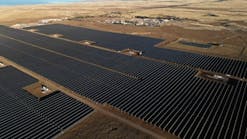NJ Requests PJM Interconnection to Include 11 GW Offshore Wind Policy in Planning
The New Jersey Board of Public Utilities (NJBPU) has formally requested the regional grid operator PJM Interconnection to incorporate the state's current public policy of 11 GW of offshore wind by 2040 into PJM’s Regional Transmission Expansion Planning (RTEP) through its State Agreement Approach (SAA). This marks the state's second use of SAA to optimize the delivery of offshore wind generation into the transmission system.
The SAA 2.0 is expected to request proposals for the additional 3.5 GW needed to achieve the state's new 11 GW target at the Deans 500 kV substation. However, transmission developers can recommend cost-effective alternative points of interconnection that still meet the state's policy goals.
PJM and the Board Staff identified the Deans 500 kV substation as it is near high electric load centers and accessible to Bureau of Ocean Energy Management (BOEM) offshore wind lease areas that could supposedly serve the state. Additionally, PJM previously identified the available capability to accommodate the desired injection.
The Board had made a request three years ago to include the state’s then offshore wind public policy target of 7.5 GW by 2035 in PJM's transmission planning process. This led to a competitive solicitation for multiple transmission projects.
SAA 2.0 will not affect the offshore wind projects that have already been awarded or those that will be awarded up to a total of 7.5 GW. Such projects will interconnect as directed in applicable Board Orders approving qualified offshore wind projects. SAA 2.0 will only be used for new, approved projects up to the Governor's new goal of 11 GW. The Board has directed Staff to prepare an SAA 2.0 Solicitation Guidance Document (SAA 2.0 SGD) containing solicitation details and the proposal evaluation process.
A draft SAA 2.0 SGD will be issued for public comment to inform the final SAA 2.0 solicitation. The staff has also been directed to expedite engagement with other states, regional grid operators, federal regulators, and other interested parties about a regional offshore wind transmission solution.
Employing the SAA process to identify and award transmission projects is anticipated to save ratepayers hundreds of millions of dollars while offering many other benefits. PJM's RTEP rules provide substantial ratepayer protections, and the Board reserves the right to select any or no projects in the SAA 2.0 process. Selecting a transmission project or projects through SAA 2.0 is expected to result in lower costs for ratepayers than if NJBPU had not employed the SAA process, while also reducing environmental and community impacts and maintaining safe and reliable electric service.
NJBPU will work with PJM to start the SAA 2.0 process promptly.


